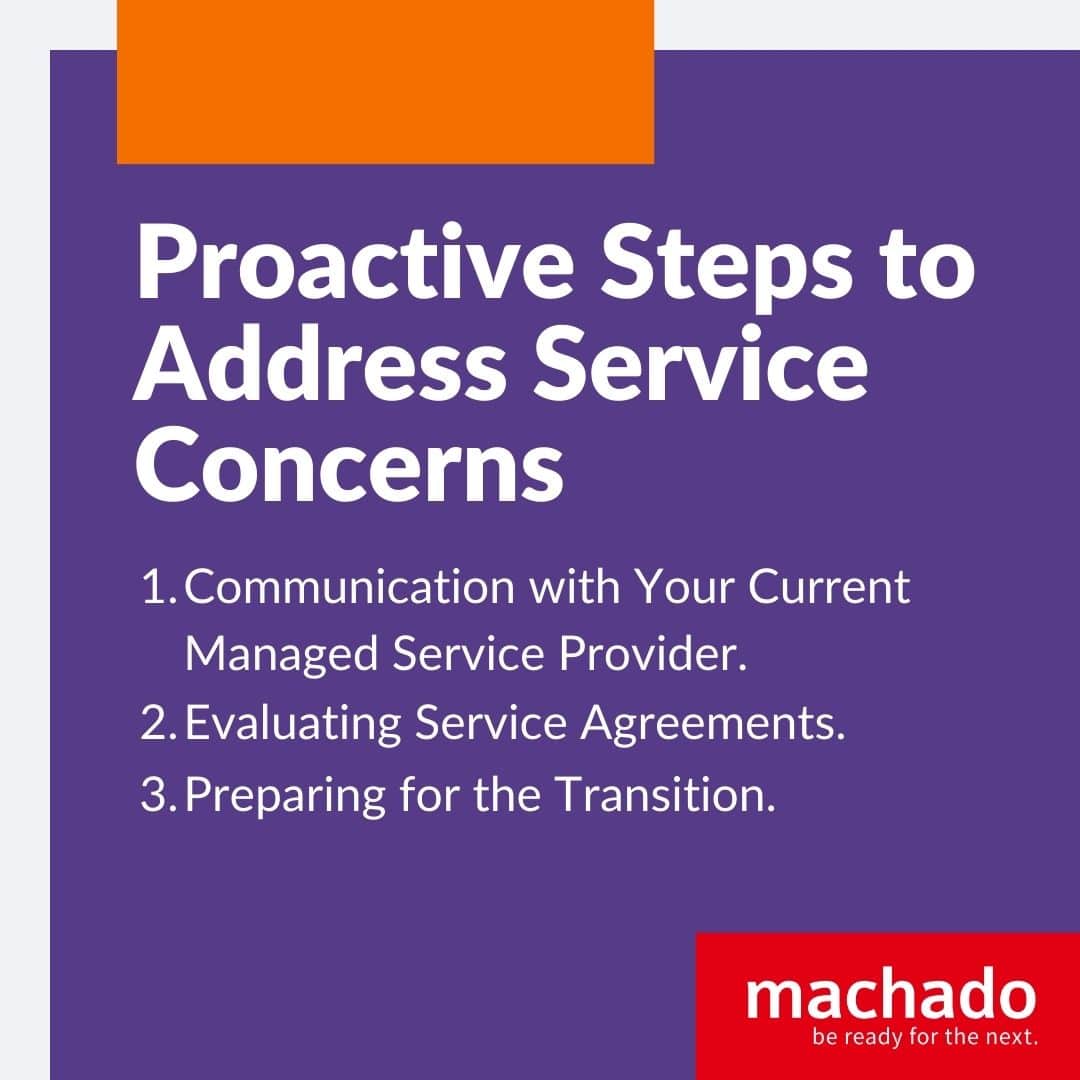TL;DR: The trend of MSP (Managed Service Providers) acquisitions, especially by larger firms, has been on the rise, driven by the high profitability and growth prospects of the MSP industry. These mergers are often aimed at consolidating resources and capturing a larger market share. However, for MSP clients, the aftermath of such acquisitions can be challenging. This post explores these challenges and how you can avoid them.
Understanding MSP Acquisitions and Their Impact
In the world of professional services, change is the only constant.
And if you’re reading this, chances are your Managed Service Provider (MSP) has recently been acquired, leaving you with a mix of questions and concerns about the future.
MSP acquisitions can bring about significant transformations, and navigating these changes is crucial for ensuring uninterrupted service and capitalizing on potential new opportunities. This can be particularly challenging for banks, healthcare providers, and law firms, where business continuity and adherence to industry regulations are paramount.
Having “adopted” clients who felt lost in the transition when their IT firm was acquired, I completely understand the feelings. I’ve built my company to be proactive and fill the void left when small firms are gobbled up by the big boys.
In this guide, we explore the critical steps to manage this transition smoothly, keeping your business objectives and IT needs at the forefront.
So, whether you’re a business owner, an IT manager, or a concerned employee, let’s dig into the world of post-acquisition strategies and make this transition a seamless one for you and your organization.
Understanding the Impact of MSP Acquisitions
The acquisition of a smaller MSP by a larger MSP can bring significant shifts in your IT services.
This is particularly vital for businesses in industries like professional services, banking, and manufacturing, where specialized IT solutions and dependable infrastructure are key.
Cultural and Service-Level Changes
The acquisition of an MSP often results in a shift in company culture and service approach.
This might change service level agreements (SLAs), with different response times or support structures.
Cost changes are common, with new pricing structures and billing models possibly leading to increased costs.
Key personnel you are familiar with might be reassigned or leave, disrupting service continuity.
It’s important to prepare for these changes and understand how they might require adjustments in your interaction with the new provider.
Challenges in Integration and Communication
Integrating systems and processes after an MSP acquisition poses significant challenges. This transition often involves merging different technological platforms, which can temporarily disrupt service efficiency. Downtime like this can cost $5,600 a minute, which is why Co-Managed IT is so important.
Communication within your business can also become more challenging, potentially leading to delays in getting the right responses.
There may be a misalignment between the larger MSP’s offerings and your specific business goals, requiring a careful review of the new services against your objectives. These changes can be key to maintaining the resilience and efficiency of your IT infrastructure.
With a clearer understanding of the broad impacts of MSP acquisitions, it’s time to focus on sector-specific challenges.
These changes uniquely affect professional services, banking, and manufacturing industries, each reliant on IT in distinct ways.
Industry-Specific Impacts of MSP Acquisitions
If you’re working in healthcare, professional services, banking, or manufacturing, the aftermath of an MSP acquisition can bring significant changes to your IT infrastructure and services.
This section aims to pinpoint the unique challenges your sector faces and provide practical advice for these changes.
Regional Healthcare Providers
The acquisition of your regional MSP (Managed Service Provider) by a larger company, particularly in the context of a regional healthcare clinic, presents its own set of distinct challenges.
The healthcare industry has unique requirements due to the sensitive nature of medical data, the need for continuous system availability, and stringent regulatory standards. Here’s an overview of the challenges you might face:
- Compliance with Health Regulations: Healthcare clinics must adhere to strict health data regulations like HIPAA in the United States. The new IT provider must be proficient in these regulations to ensure compliance.
- Data Security and Patient Privacy: Protecting patient data is critical. The new IT provider needs to demonstrate robust security measures to safeguard sensitive medical information.
- System Availability and Reliability: Healthcare clinics require almost 100% system uptime for patient care and emergency services. It’s crucial that the new IT provider can maintain consistent and reliable IT support.
- Integration with Medical Systems: Your clinic likely uses specialized healthcare software and systems. The IT provider should have the expertise to support these specific systems and ensure seamless integration.
- Cost and Budget Implications: Be aware of potential changes in the IT service costs. It’s important to assess how these changes align with your clinic’s budget and financial planning.
- Adaptation to New Processes and Tools: The transition may involve adapting to new IT processes or tools introduced by the larger provider. This could require additional training for your staff.
- Communication Challenges: With a larger IT provider, you might face challenges in getting prompt and direct communication, which is crucial for addressing urgent IT issues in healthcare settings.
- Customization and Flexibility: Your healthcare clinic might have specific IT needs. Ensuring that the new provider offers flexible and tailored IT solutions is important for efficient clinic operations.
- Building New Relationships: Establishing trust and a good working relationship with the new IT provider is key. This relationship is essential for them to understand and effectively support your clinic’s unique needs.
- Transition Management: Managing the transition smoothly is vital to avoid disruptions in clinic operations. Ensure there is a clear plan for the transition phase with minimal impact on patient care and services.
To mitigate these challenges, maintain regular communication with the new IT provider, clearly articulate your healthcare-specific requirements, and closely monitor the transition process.
Regularly review the service quality and security standards to ensure they meet the specific needs of your healthcare clinic. Additionally, consider developing contingency plans to handle any unforeseen issues during the transition period.
Professional Services Firms (In This Example, Accounting)
For your accounting firm, the acquisition of your IT support company by a larger entity brings about its own set of unique challenges. Given the nature of accounting, which involves handling sensitive financial data and adhering to strict regulatory standards, here are the key issues you might face, explained in a straightforward manner:
- Data Security and Privacy: The top concern for an accounting firm is the security and confidentiality of client data. You need to ensure that the new IT provider upholds the highest standards of data protection and privacy.
- Compliance with Regulations: Accounting firms are subject to various regulatory requirements. The new IT provider must be familiar with these regulations and ensure that all IT services are compliant.
- Service Continuity and Reliability: Reliable IT support is crucial for the smooth operation of accounting services. Any disruption or downtime can affect your firm’s productivity and client satisfaction.
- Software and Application Support: Your firm likely uses specialized accounting software. The new IT provider should have the expertise to support these applications and ensure they are always up to date and functioning properly.
- Customization and Personalized Service: You might be used to receiving personalized IT services tailored to your firm’s specific needs. With a larger provider, there’s a risk of losing this customized approach.
- Cost Changes: Be prepared for potential changes in the cost structure for IT services. It’s important to understand how these changes might affect your firm’s budget.
- Communication and Responsiveness: Larger IT firms may have more complex hierarchies, which could lead to slower response times and less direct communication, impacting how quickly and effectively your IT issues are resolved.
- Building New Relationships: Developing a new working relationship with the IT provider is important. Trust and understanding are key to ensuring they align with your firm’s operational needs and client service standards.
- Data Migration and Integration: If the new provider opts to change systems or platforms, there might be challenges related to data migration and integration, which need to be handled carefully to avoid data loss or corruption.
- Transition and Change Management: Managing the transition period effectively is crucial. Ensure there’s a plan in place for a smooth transition, with minimal disruption to your firm’s operations and client services.
To address these challenges, it’s important to have open and ongoing communication with the new IT provider. Clearly convey your firm’s specific needs, especially around data security and regulatory compliance. Regularly review and assess the service quality to ensure it meets your firm’s standards and client expectations.
Banks and Financial Services
If you’re running a bank (or other financial services firm), the acquisition of a smaller IT firm by a larger entity can present unique challenges, particularly given the sensitive nature of the banking industry.
Here’s a breakdown of the specific IT-related issues your bank might encounter:
- Security and Compliance: Banks have stringent requirements for data security and regulatory compliance. The new IT provider must understand and adhere to these banking-specific regulations. Any lapse in security or compliance could have serious consequences.
- Service Continuity: Ensuring uninterrupted IT services is crucial for a bank. You’ll need to verify that the transition doesn’t affect your bank’s daily operations, including customer transactions, online banking services, and internal systems.
- Communication and Support: Larger IT firms might have more complex structures, which can lead to longer response times or less personalized support. For a bank, timely and effective IT support is critical to resolve issues quickly and maintain customer trust.
- Integration of Banking Systems: Banks often use specialized software and systems. It’s important that the new IT provider has the expertise to manage and integrate these banking-specific technologies effectively.
- Data Management and Privacy: Handling customer data with utmost confidentiality and privacy is a top priority. The new provider must demonstrate robust protocols for data management and protection.
- Cost and Efficiency: Changes in service costs and efficiency can impact a bank’s operations and profitability. You’ll need to assess if the new cost structure aligns with your bank’s budget and operational goals.
- Customization and Flexibility: Banks require IT services that can be tailored to their specific needs. The new IT firm should offer the flexibility to customize services as per your bank’s requirements.
- Trust and Relationship Building: Building a new relationship with the larger IT provider is important. Trust and clear communication are key to ensuring that they understand and align with your bank’s objectives and values.
- Scalability and Future Growth: As your bank grows, your IT needs will evolve. The new provider should be able to scale services accordingly and support future technological advancements.
- Transition Management: The changeover period is critical. Ensure there is a solid plan in place to manage the transition without affecting the bank’s operations or customer experience.
To navigate these challenges, maintain open lines of communication with the new IT provider, clearly articulate your bank’s specific needs and expectations, and closely monitor the transition process to ensure compliance and service quality. Establishing strong oversight and having contingency plans can also help in managing this transition effectively.
Manufacturers
For those in manufacturing, the smooth integration of IT with your production systems is key.
When your manufacturing company’s IT provider is acquired by a larger firm, you might face a few key challenges, including:
Service Quality: The service you’re used to might change. You could see differences in how quickly they respond to your problems and the level of personal attention you get.
New Ways of Doing Things: The new company might use different systems or processes. This means you and your team might need some time to learn and get used to these changes.
Communication: It might become harder to talk directly to the right people or get quick answers because larger companies often have more layers and bigger teams.
Understanding Your Needs: The new company might not be as familiar with the specific needs of manufacturing businesses like yours, which could affect the support they provide.
Costs: The fees for IT support might change. Be prepared for potential differences in how much you’re charged and how billing is handled.
Data Security: It’s important to make sure your sensitive data stays safe and that the new company follows the right rules and standards for your industry.
Reliability: Check if the new provider can keep your systems running smoothly without a lot of downtime.
Building New Relationships: The personal connection you had with your old IT provider might not be there anymore, so it could take some time to build trust with the new team.
Flexibility: Larger companies might not be as flexible in customizing their services to fit your specific needs.
Handling the Changeover: During the switch to the new IT provider, make sure your manufacturing operations don’t get disrupted and any problems are quickly sorted out.
To handle these challenges, it’s a good idea to talk openly with your new IT provider, tell them exactly what your company needs, and make sure you have a clear agreement on how they will support your business.
Now that we’ve explored the unique challenges each sector faces with MSP acquisitions, it’s time to consider the proactive steps you can take. How do you address these concerns effectively within your company?
Next, we’ll explore practical strategies and tips for communicating with your current MSP, evaluating service agreements, and ensuring that your IT needs continue to be met efficiently and securely.
Proactive Steps to Address Service Concerns
The changes brought on by an MSP acquisition require a proactive approach from your side. Here are some essential actions to consider, ensuring that your IT services remain aligned with your business’s needs during this transition period.
Communication with Your Current MSP
It’s crucial to maintain open lines of communication with your MSP. Don’t hesitate to ask direct questions about how the acquisition will impact your services.
Keeping a record of these discussions is important for future reference and maintaining clarity during the transition.
Evaluating Service Agreements
Take the time to review your existing service agreements. Look for any changes in the terms that might come with the new MSP. Are there differences in the service levels or support structures that could affect your business? Understanding these changes is key to negotiating services that continue to meet your specific needs.
Preparing for the Transition
Actively participating in the transition planning is vital.
Collaborate with your MSP to outline a clear roadmap for integrating systems and processes. Ensure that this plan includes detailed timelines, key milestones, and contingency strategies for potential disruptions.
Thorough preparation is essential to minimize operational impacts and safeguard the continuity of your IT services.
With these proactive measures in place to address immediate service concerns, the next step is to consider whether transitioning to a new, more proactive MSP might better serve your long-term IT needs.
In the following section, we’ll discuss how to effectively evaluate potential MSPs and what to consider when making this crucial decision for your business.
Considering a Transition to a Proactive MSP
When your current MSP undergoes significant changes, such as an acquisition, it might be the right time to evaluate if a transition to a new MSP would better align with your business’s evolving needs.
Here’s how to approach this decision-making process.
Research and Evaluation
Start by researching potential new MSPs. Look for providers with a strong track record in your specific industry and those known for proactive service models. Evaluate their range of services, technical expertise, and customer reviews.
It’s crucial to choose an MSP that not only offers the services you need but also demonstrates a commitment to staying ahead of technology trends and security challenges.
Requesting Proposals and Checking References
Once you have a shortlist of potential MSPs, the next step is to request detailed proposals.
These should include specific information about their service models, support structures, and how they plan to address your unique IT needs.
Don’t forget to check references – speaking with current or past clients can give you valuable insights into the MSP’s reliability, responsiveness, and quality of service.
Making an Informed Decision
Making the switch to a new MSP is a significant decision. Weigh all the information you’ve gathered, considering how each MSP’s offerings align with your long-term IT strategy and business goals. The right MSP should not only provide the necessary IT services but should also act as a partner in your business’s growth and success.
The Transition Process
Moving to a new Managed Services Provider is a significant change that requires careful planning and execution. Your team is not alone, nearly 51% of US organizations are considering a switch for their data security. Here’s how to manage the transition effectively:
Planning and Data Security
The first step in the transition is comprehensive planning. Transformations can be expensive, reports state that the Data Transformation industry is valued at nearly 2.3bn in 2023.
This involves mapping out your entire process, from initial data migration to the final cutover.
Data security should be a top priority during this phase. Ensure that your new MSP has protocols for data protection during the transfer and set up.
This might include encrypted data transfers, rigorous access controls, and thorough security audits.
Communication and Training
Effective communication is crucial throughout the transition. Keep your teams informed about the upcoming changes and how they will affect their work.
Consider any training or orientation that your staff might need to work effectively with the new systems and support processes. Your new MSP should provide the necessary resources and assistance for this training.
Review and Testing
Before going live with the new MSP, it’s important to conduct thorough reviews and testing of the new systems. This includes checking that all services are working as expected and that data integrity is maintained. Any issues discovered during this phase should be resolved before the full transition is completed.
Establishing Regular Reviews
Once the transition to the new MSP is complete, establish a schedule for regular review meetings. These meetings are an opportunity to discuss any concerns, review service performance, and make adjustments as needed.
Regular communication with your new MSP will help ensure that your IT services continue to align with your business needs.
Mastering the MSP Evolution: Key Takeaways for Proactive Management
MSP acquisitions demand more than just understanding the changes; it involves strategic foresight and a proactive stance.
The shifts in your MSP’s structure and services due to your MSP being acquired aren’t just operational challenges; they’re opportunities to make your IT infrastructure for optimal performance and security.
How you respond and adapt to these changes can significantly influence your operational resilience and future readiness.
Your decision-making in this evolving MSP environment is crucial. It’s about aligning your IT services not just with your current needs but also with your future goals.
Download our guide to learn how you can get more done with your current IT staff.Be Ready for the Next IT Opportunity







